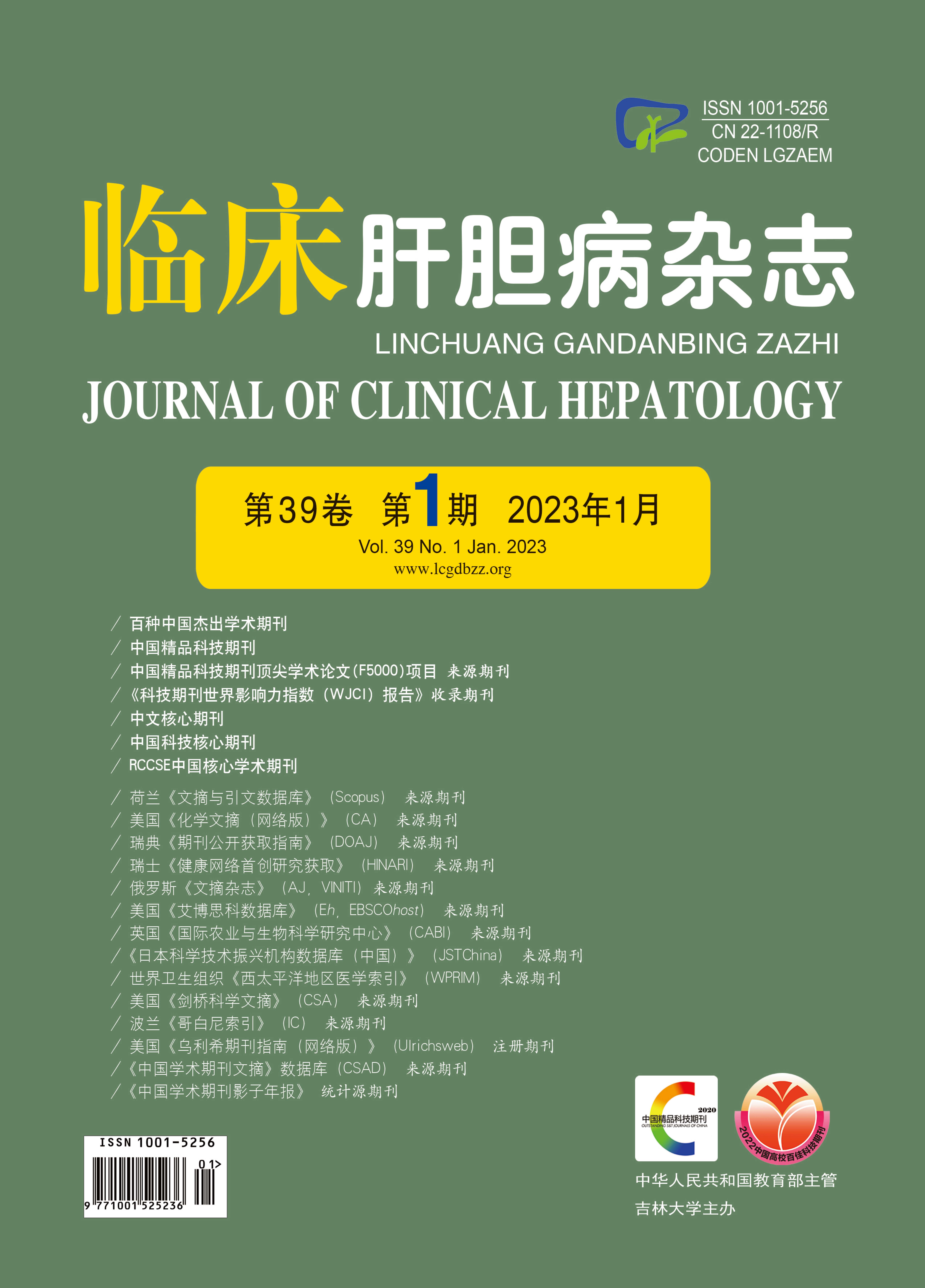| [1] |
XU MM, KONG M, YU PF, et al. Clinical course and outcome patterns of acute-on-chronic liver failure: a multicenter retrospective cohort study[J]. J Clin Transl Hepatol, 2021, 9(5): 626-634. DOI: 10.14218/JCTH.2020.00179. |
| [2] |
MENG QH, HOU W, YU HW, et al. Resting energy expenditure and substrate metabolism in patients with acute-on-chronic hepatitis B liver failure[J]. J Clin Gastroenterol, 2011, 45(5): 456-461. DOI: 10.1097/MCG.0b013e31820f7f02. |
| [3] |
SAM J, NGUYEN GC. Protein-calorie malnutrition as a prognostic indicator of mortality among patients hospitalized with cirrhosis and portal hypertension[J]. Liver Int, 2009, 29(9): 1396-1402. DOI: 10.1111/j.1478-3231.2009.02077.x. |
| [4] |
GUNSAR F, RAIMONDO ML, JONES S, et al. Nutritional status and prognosis in cirrhotic patients[J]. Aliment Pharmacol Ther, 2006, 24(4): 563-572. DOI: 10.1111/j.1365-2036.2006.03003.x. |
| [5] |
CAREGARO L, ALBERINO F, AMODIO P, et al. Nutritional and prognostic significance of serum hypothyroxinemia in hospitalized patients with liver cirrhosis[J]. J Hepatol, 1998, 28(1): 115-121. DOI: 10.1016/S0168-8278(98)80210-9. |
| [6] |
WU Y, YOU S, ZANG H, et al. Usefulness of serum thyroid-stimulation hormone (TSH) as a prognostic indicator for acute-on-chronic liver failure[J]. Ann Hepatol, 2015, 14(2): 218-224.
|
| [7] |
KAYACETIN E, KISAKOL G, KAYA A. Low serum total thyroxine and free triiodothyronine in patients with hepatic encephalopathy due to non-alcoholic cirrhosis[J]. Swiss Med Wkly, 2003, 133(13-14): 210-213. DOI: 2003/13/smw-10172. |
| [8] |
Organization Committee of 13th Asia-Pacific Congress of Clinical Microbiology and Infection. 13th Asia-Pacific Congress of Clinical Microbiology and Infection Consensus Guidelines for diagnosis and treatment of liver failure[J]. Hepatobiliary Pancreat Dis Int, 2013, 12(4): 346-354. DOI: 10.1016/s1499-3872(13)60055-7. |
| [9] |
MVLLER MJ, LAUTZ HU, PLOGMANN B, et al. Energy expenditure and substrate oxidation in patients with cirrhosis: the impact of cause, clinical staging and nutritional state[J]. Hepatology, 1992, 15(5): 782-794. DOI: 10.1002/hep.1840150507. |
| [10] |
LIVESEY G, ELIA M. Estimation of energy expenditure, net carbohydrate utilization, and net fat oxidation and synthesis by indirect calorimetry: evaluation of errors with special reference to the detailed composition of fuels[J]. Am J Clin Nutr, 1988, 47(4): 608-628. DOI: 10.1093/ajcn/47.4.608. |
| [11] |
YANG WB, CHEN EQ, BI HX, et al. Different models in predicting the short-term prognosis of patients with hepatitis B virus- related acute-on-chronic liver failure[J]. Ann Hepatol, 2012, 11(3): 311-319. DOI: 10.1186/1471-230X-12-44. |
| [12] |
HUO TI, WU JC, LIN HC, et al. Evaluation of the increase in model for end-stage liver disease (DeltaMELD) score over time as a prognostic predictor in patients with advanced cirrhosis: risk factor analysis and comparison with initial MELD and Child-Turcotte-Pugh score[J]. J Hepatol, 2005, 42(6): 826-832. DOI: 10.1016/j.jhep.2005.01.019. |
| [13] |
LEE HS, CHOI GH, JOO DJ, et al. Prognostic value of model for end-stage liver disease scores in patients with fulminant hepatic failure[J]. Transplant Proc, 2013, 45(8): 2992-2994. DOI: 10.1016/j.transproceed.2013.08.036. |
| [14] |
KABIR A. Decreased serum total T3 level in hepatitis B and C related cirrhosis by severity of liver damage[J]. Ann Hepatol, 2013, 12(3): 506-507. DOI: 10.3748/wjg.v19.i42.7455. |
| [15] |
PENTEADO KR, COELHO JC, PAROLIN MB, et al. The influence of end- stage liver disease and liver transplantation on thyroid hormones[J]. Arq Gastroenterol, 2015, 52(2): 124-128. DOI: 10.1590/S0004-28032015000200009. |
| [16] |
CASTRO I, QUISENBERRY L, CALVO RM, et al. Septic shock non- thyroidal illness syndrome causes hypothyroidism and conditions for reduced sensitivity to thyroid hormone[J]. J Mol Endocrinol, 2013, 50(2): 255-266. DOI: 10.1530/JME-12-0188. |
| [17] |
MALIK R, HODGSON H. The relationship between the thyroid gland and the liver[J]. QJM, 2002, 95(9): 559-569. DOI: 10.1093/qjmed/95.9.559. |















 DownLoad:
DownLoad: